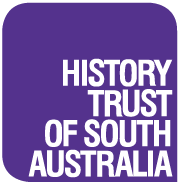The museum dates back to the 1990s when members of the community strove to restore the heritage of the Sheaoak town and district.
The Ahrens family had been in business in the district for around a 100 years and Stefan Ahrens, Managing Director of Ahrens Engineering provided the land and a shed to start the museum. The shed was originally the old police horse stables at Homebush, purchased by the Ahrens Engineering group before demolition for the Sydney Olympics in 2000, and erected on the land with additions at each end. A community hall was built beside it as a replica of one of the old hotels. The entrance to the museum was constructed as a replica of the original Sheaoak Log blacksmith’s shop that had been bought in 1906 by Stefan’s great grandfather Karl Ahren, which was the start of the four generation family business. There is one 1840s house still standing and the original tiny post office.
The machinery museum has been very well supported by the Ahrens family and many of the 150 machines are owned by Stefan’s father, Bob Ahrens. The collection consists of fully restored and operational vintage engines, tractors, farm equipment including horse drawn wagons and drays and hand operated equipment. Some of the old makes on display are Cooper, Bamford, Petter, Lister, Moffat Virtue, Ronaldson Tippett, Bagshaw, Blackstone, Crossley, Ruston-Hornsey, Blackstone, Massey Harris and Caterpillar. The pride of the museum is a 1907 Marshall traction engine which spent most of its working life in Tasmania and was restored by Bob Ahrens. Bob’s father (and Stefan’s grandfather) Bill used to make buckboards out of cars and there is a 1928 Nash buckboard on display.
Group tours start and end in the community hall next to the museum. Once inside the museum compressed air instead of steam is used to start up the various machines.
The museum is a member of the National Historical Machinery Association Inc.
Today Sheaoak Log is a tiny community but in its heyday in the mid-19th century following the discovery of copper at Kapunda, it had 50 houses, Post Office No 26, a butcher shop and 3 hotels. The town’s unusual name is derived from an incident during the marking of track from Kapunda to Port Adelaide with a single furrow plough so that copper could be exported. When the plough was 2km north of Sheaoak Log the plough broke and a sheaoak tree was cut down to mend it. The site was a day’s trip for a bullock or horse team from Kapunda and an idea site for a town. In 1886 the railway to Kapunda was completed but the line didn’t go anywhere near Sheaoak Log. Without the teams hauling the copper and resting there overnight it soon became a ghost town. There is a plaque and sculpture of the plough telling the story of the town outside the community hall.

